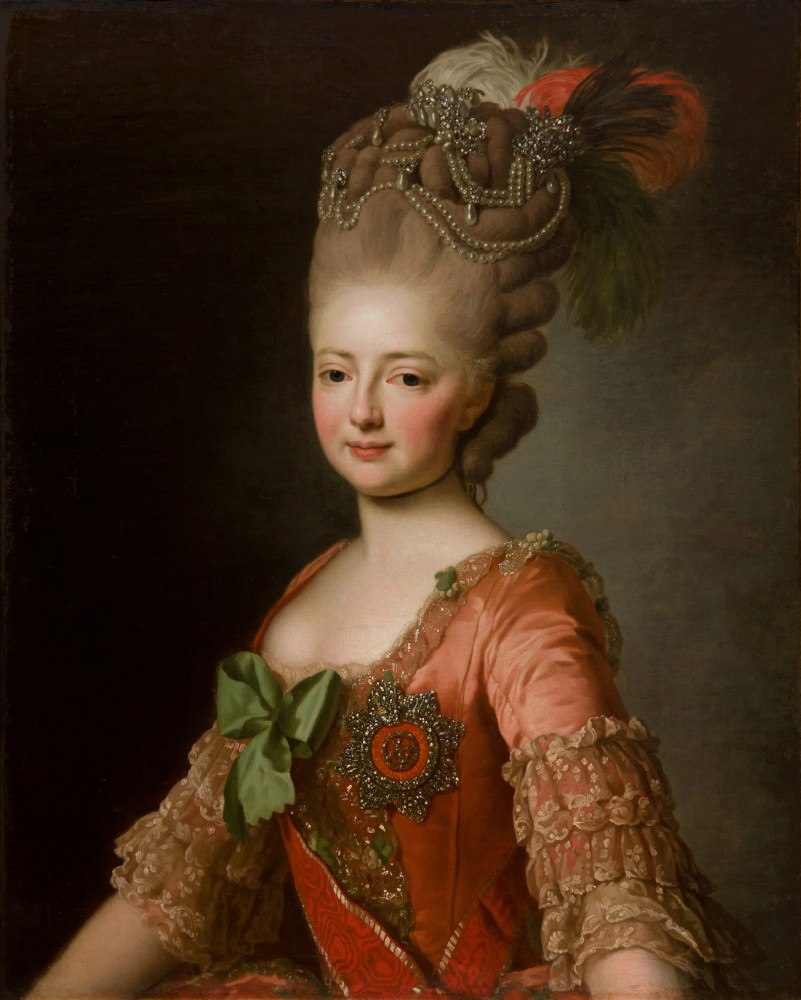
There are a few decades out of every century where the preference for “big hair” is unilaterally embraced. Though more recent styles like the Beehive or the Hi-Top Fade added inches to the wearer’s overall height, all pale in comparison to the most iconic episode in tall hair history: the invention of Le Pouffe.
But before we ascend to the heights of coiffure heaven, let’s take a look at the simple style that would be key in the evolution of the Pouffe.
The Fontange – A Dignified Forerunner
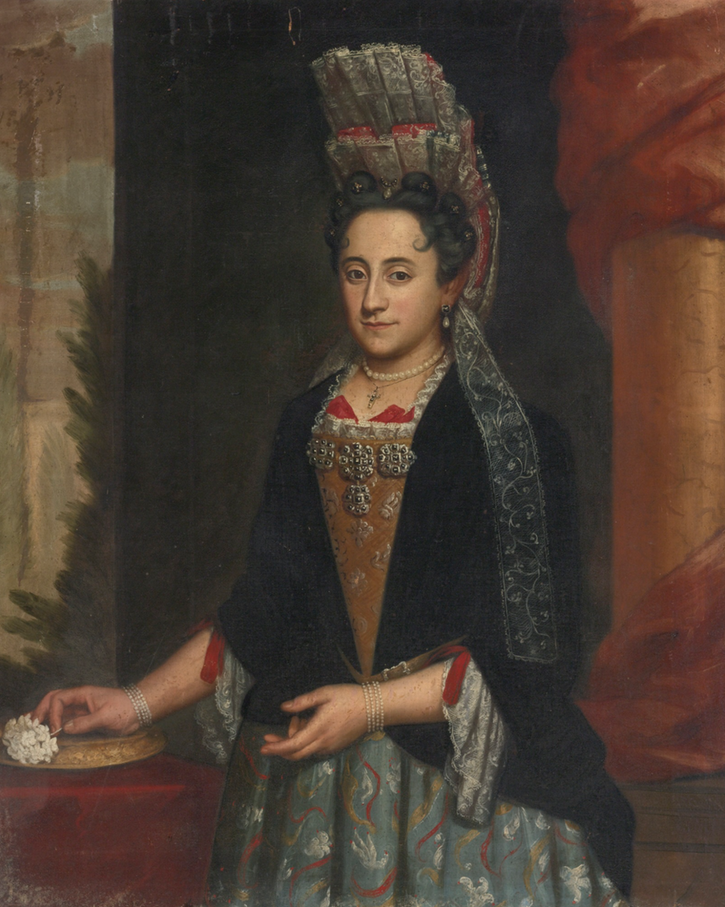
The Fontange of the 1680’s, also known as the frelange was a ‘do inspired by one of Louis XIV’s mistresses, the Duchesse de Fontagne, who supposedly took a ribbon from her dress to tie up her unruly hair that had been blown about while riding. Originally the style consisted of a section of ringlets gathered at the top of the head and held in place with ribbons, but as the look hit a height of popularity in both France and England, it began to change. Artificial height was added through the use of a strategically constructed wire commode, upon which elaborate curls, ribbons and lace work were pinned.
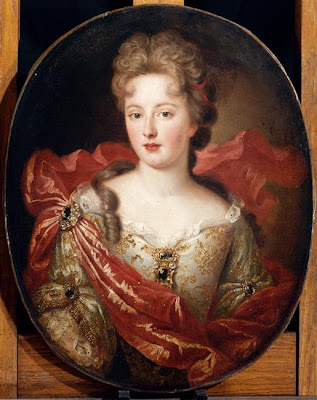
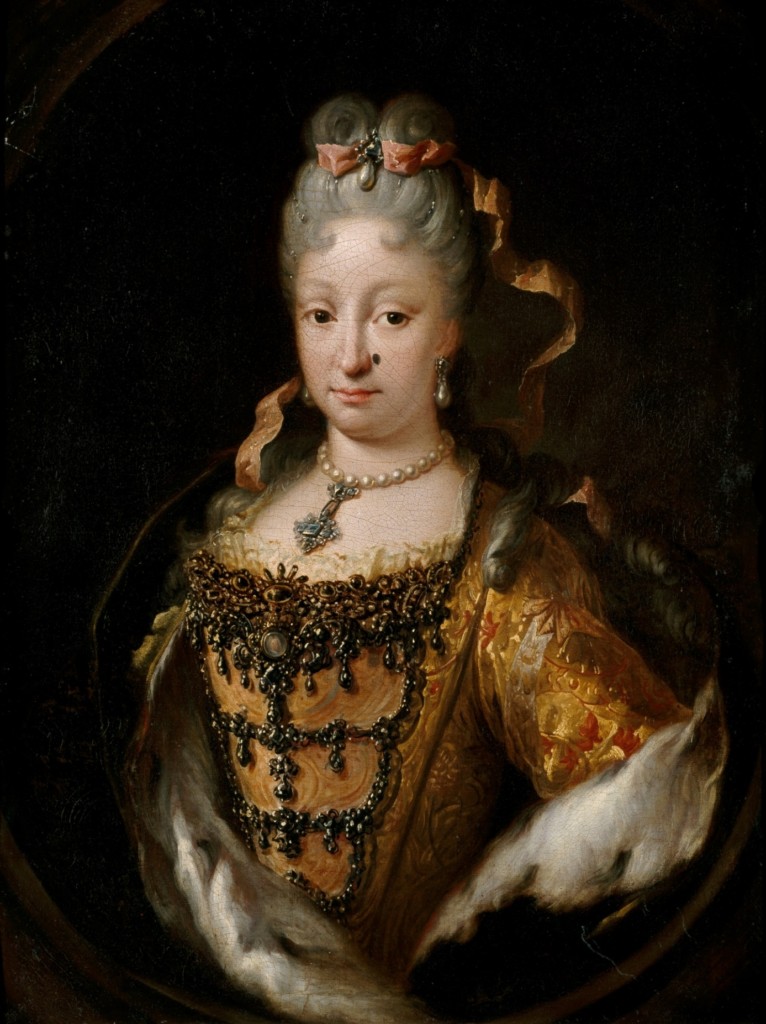
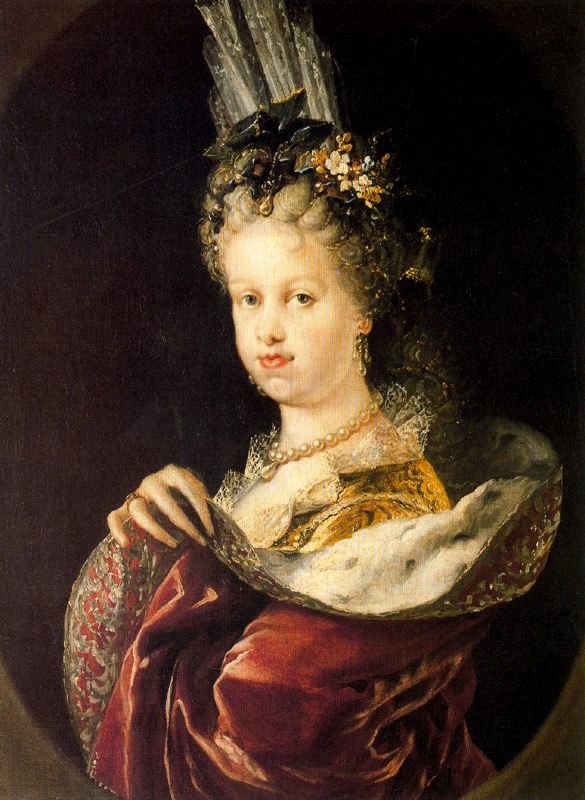
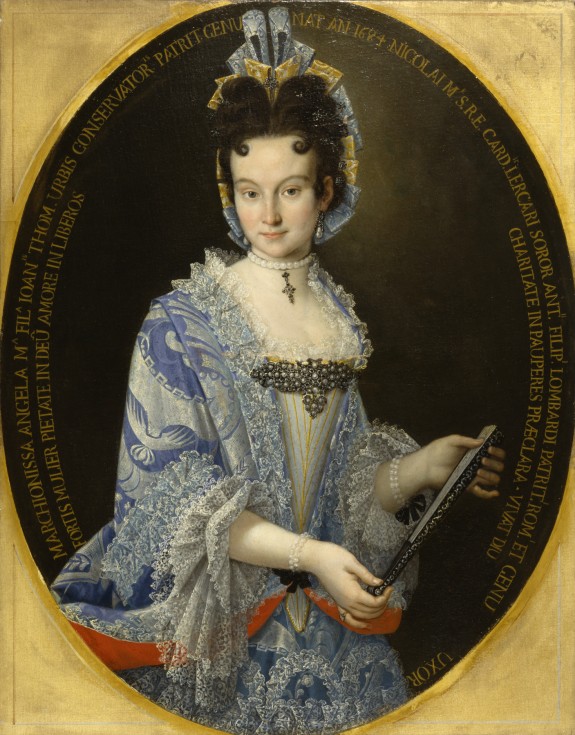
Variations of the fontange included sweeping lappets, delicate fripon curls at the brow line, false extensions made from horsehair or a starched fan of lace and fabric.
“As the fontange grew taller, women had great difficulty securing it on their heads. Then, when finally secured, the fontange often slipped to one side or another. Women found the instability of the fontange so frustrating that many began suggesting that the heads of infant girls should be flattened to better hold the fontange later in life.”1
Luckily, there is no historical evidence to support body modification all for the sake of big hair, and in the early 18th century, the fontange tumbled from the height of fashion.
Tête de Mouton – Curls on Steroids
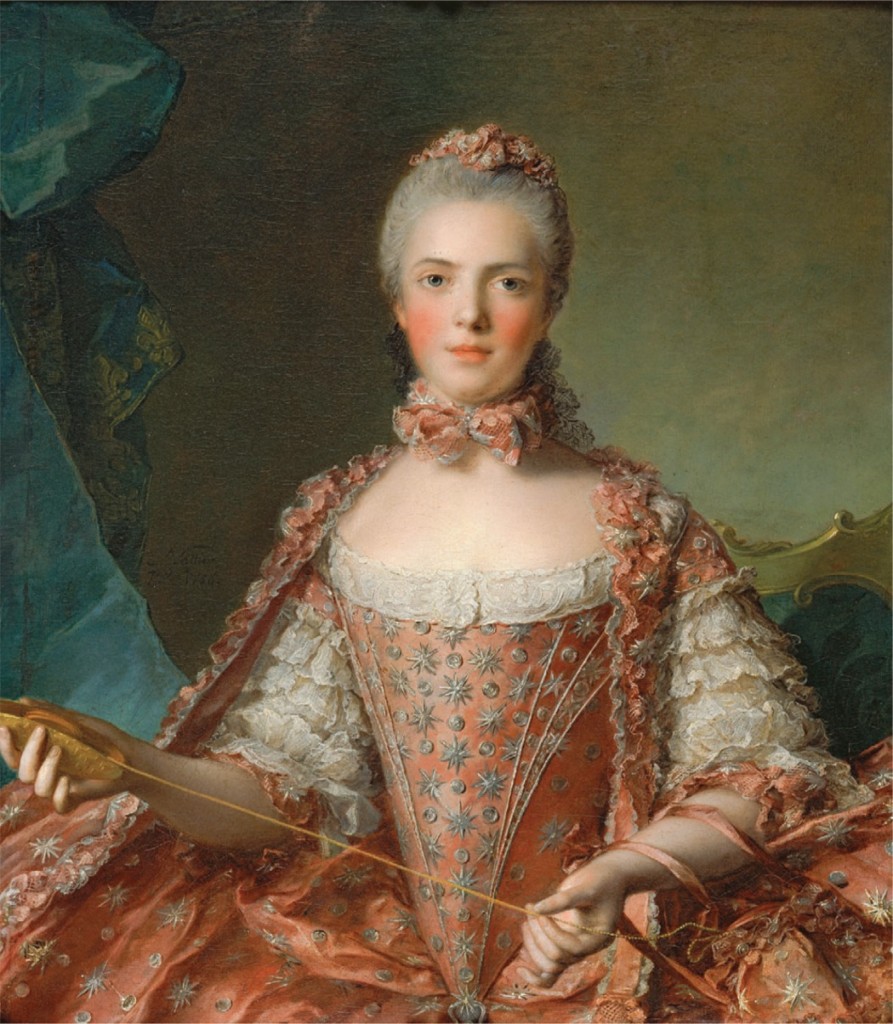



By the 1740’s, hair was curled into oblivion, but was styled very close to the head with the length braided and pinned up. All the height that was the rage with the fontange dissipated into a style called tête de mouton (the sheep’s head). Both young ladies and gentlemen of the court gravitated towards an outdoor-centric lifestyle during the 1750’s – perhaps a backlash to the gratuitously decorated and pampered indoor lifestyle during the Rococo period. They were walking, riding, exploring the wilderness and bringing along sumptuous picnics. Their outdoorsy lifestyle demanded a practical coiffure.
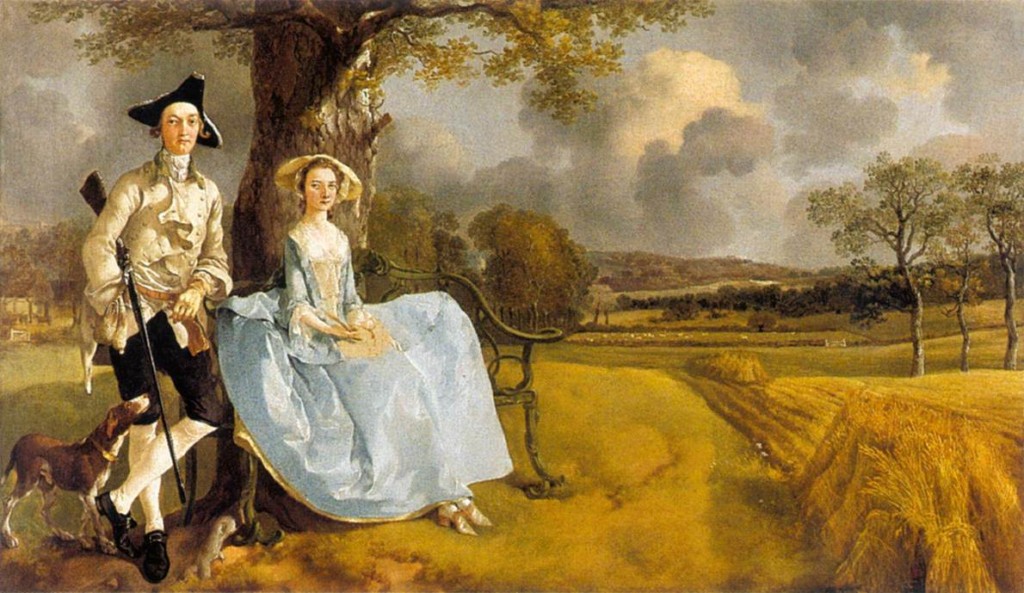
Pomade (also pomatum), powder and tasteful ornaments like pearls, flowers and ribbons applied to the hair completed the overall look. The sculptural quality that pomade lent to hairstyles made it a sought after item available both in shops and made at home by 18th century DIY-ers. Most recipes call for the use of animal fat as a base, often including apples for the sticky pectin they contained; the final elements in these pomades were fragrant herbal and often delousing oils. These oils were usually strong enough to overpower the smell of the tallow. Bathing between applications of pomade was not high on the to-do list for many, causing the less hygienic pomade wearer looks to be described as a “stiffening or compacting the hair into dirty and greasy masses … or … [turning] nature’s ornamental locks into nasty rat’s tails.”2
18th Century Pomatum Recipe
“Take one pound of rendered hog’s lard, 3 ounces of mutton suet, 3 ounces of beef marrow, one ounce of virgins wax. These must be melted in an earthen pot with some alkanet root. Strain through some gauze. Put one drachm of oil of thyme, half an ounce of bergamot, one drahm oil of cloves.”3
Pomade was recorded by some as a means of regrowing thin hair – but there were many warnings against the effects of too much hair gunk on certain individuals:
“Thus, persons of a nervous temperament, with a highly irritable skin, and bad habit of body, person liable to attacks of erysipelas [an acute bacterial infection], or to swollen glands behind the ears, or to swellings or tumors in the upper part of the neck behind, or to eruptive or other attacks of the scalp, and the like, should not have recourse to them.”4
Ques-a-co: The Rise of the Pouffe
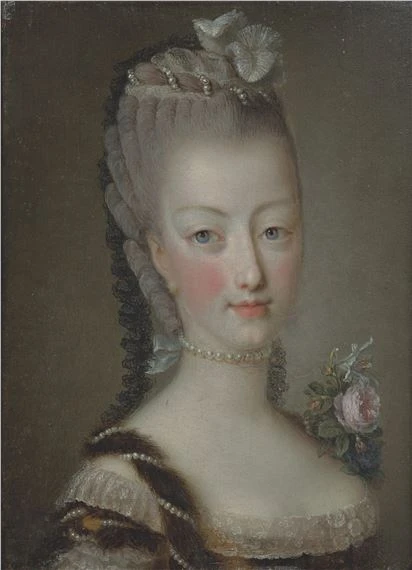
This curious hairstyle was first arranged by Marie Antoiette’s milliner, Rose Bertin. Bertin was more of a stylist and fashion designer than simple hat-maker, and her Ques-a-co (‘What is it?’) style was a massive success as soon as it was debuted in the 1774 issue of Journal des Dames. The hair was style high, featuring carefully placed curls – the crowning feature was the addition of three ostrich plumes to the back of head, allowing the feathers to lean forward over the head in a question mark shape.
Pouf aux Sentiments
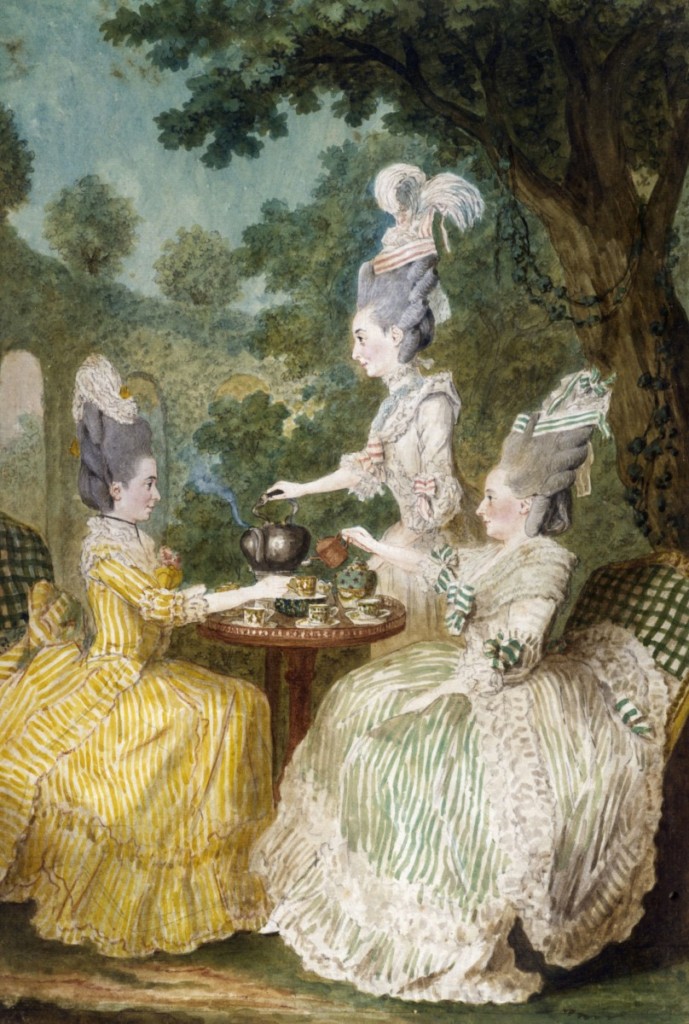
The first pouffe ever recorded was that commissioned by the Duchess of Chartres in 1774. She wanted to commemorate the birth of her son, and what better way than to sport the most outrageous hairstyle made with a variety of materials:
“… fourteen yards of gauze and numerous plumes waving at the top of a tower…two waxen figures as ornaments, representing her son in his nurse’s arms… Beside was placed a parrot pecking at a plate of cherries, and reclining at the nurse’s feet, a waxen figure of a little African boy of whom the duchess was very fond… On different parts of the hairpieces were the initials of Duke of Chartres, of Penthievre, and of Orleans, formed with the hair of those princes – the husband, father, and father-in-law of the duchess.”5
I have yet to see any attempts to recreate this particularly extreme hair style, but some miniature wax figurines from the 18th century France were recently on display in a New York gallery and they might give a glimpse into the visual impact of this peopled landscape of a hair ‘do.



Slightly disturbing, isn’t it?
Two individuals laid claim to creating the Pouffe: Madame Rose Bertin, the groundbreaking milliner/mantua maker of Marie Antoinette; and Monsieur Léonard Autié, Marie Antoinette’s favorite hairdresser. Regardless of who started the trend, from the mid 1770’s onward, the goal for the fashionable ladies was to take her hair to new heights.
Using a wire frame or cushion on top of the head, the hair was styled up over the form, resulting in a massive-looking mountain of hair. Locks were curled and lightly teased, then pinned in place with oversized hair pins. Sometimes human hair or that of a horse, yak or goat was added to fill out the silhouette.
“Frivolous women covered their heads with butterflies” and “Melancholic women went so far as to put crematory urns in their headdress.” Even the hair dresser who invented the pouf began to decry the “prodigious folly of composite and fabricated coiffures, as pictures of towns, little models of Paris, a globe or the heavens.”6
The Heights of Fantasy
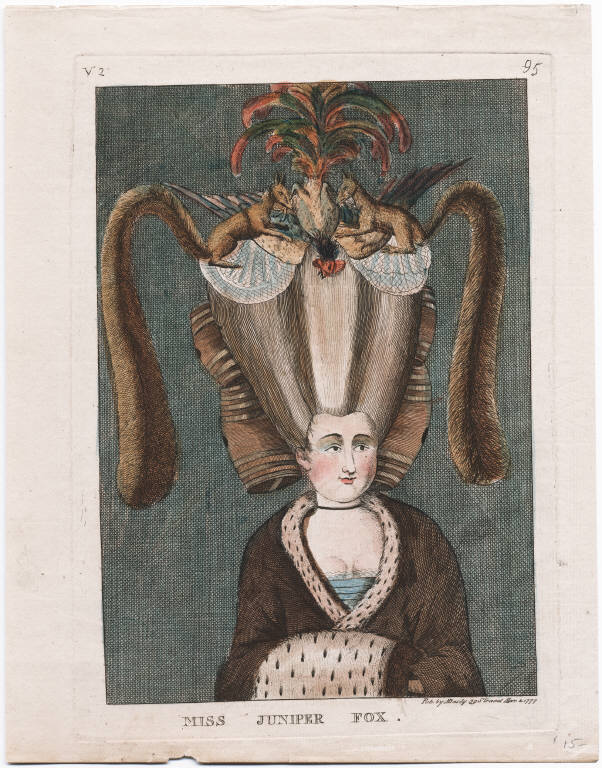
Léonard Autié himself wrote about the styles he was fabricating: “I myself had been frightened by the shamelessness of my conception; but soon the folly of the period got the better of me. One saw in the poufs the strangest things that fancy could imagine.” Bertin and Autié would create some of the most ostentatious hairstyles in history.
“… a stormy sea, a hunter shooting at ducks, a mill where a female mill worker was being seduced by a priest, and at the bottom, the mill-worker’s husband walking along with his donkey.”
– Journalist’s description of the Duchesse de Lauzun’s elaborate pouf
The look was so extreme, but it caught on – soon women were wearing their hair full of symbols of their life, love and emotions. The height of these styles often made the face closer to the center of a woman’s height – their towering tresses would be festooned with butterflies, cupid figures, birds in cages and even decorative funeral urns. The wives of officers would have regiments of soldier figurines in their pouf. You could make anything into a pouf style.
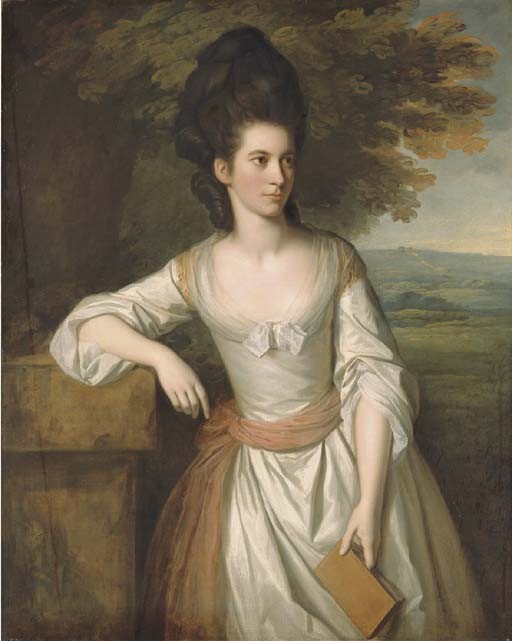
High Roll
The High Roll was Autié’s attempt to make the hair itself tower on the head – exceeding 12″ of height. With accessories, some measured up to 72″ tall. This style was a status symbol for women – contemporaries complained of the High Roll’s importation from France to England, and then in turn from England to America.
Zephyr & à la Jardinière
The Zephyr was like a portable garden of flowers, filling up the hair in a spectacular display of variety and color… à la jardinière incorporated a full garden of flowers, vegetables and sometimes grass in the hair style.
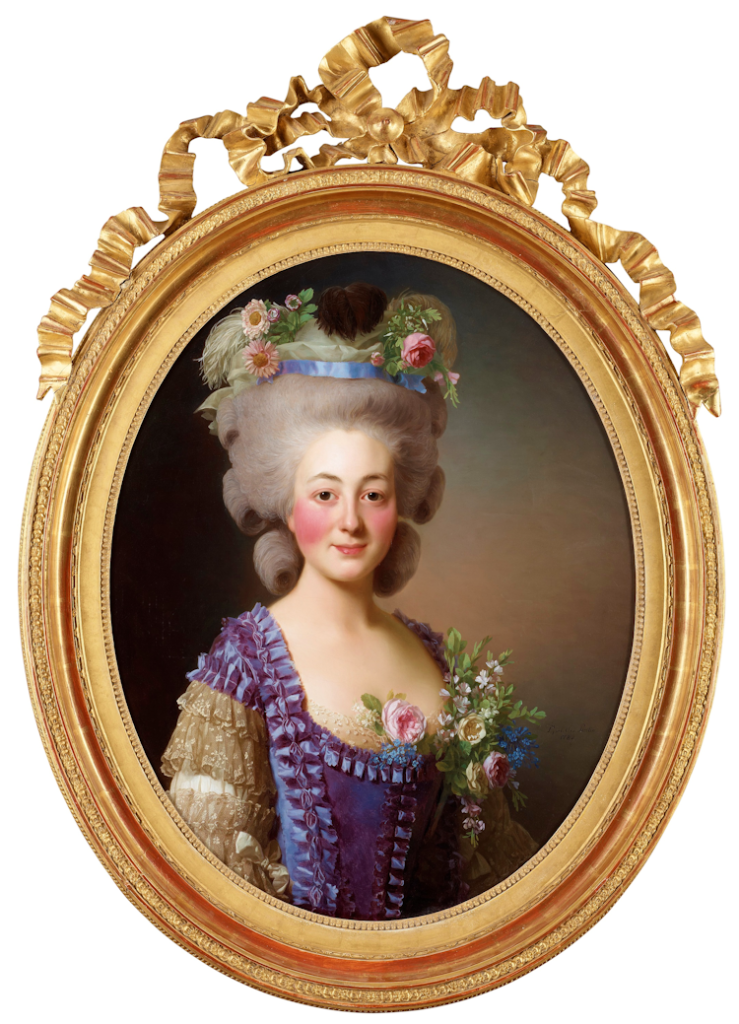
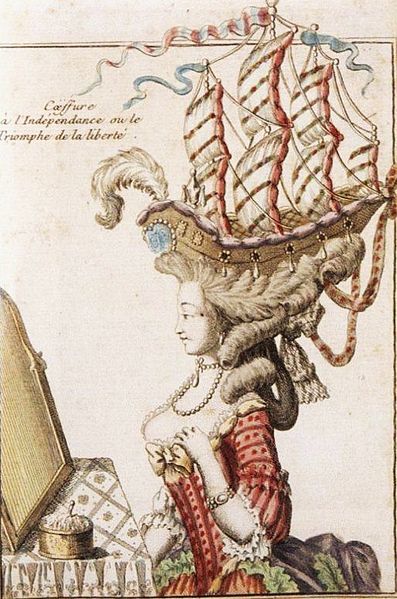
À la Belle Poule
The coiffure à la Belle Poule featured a ship appearing as though it were sailing through waves of hair.
Many of the inspirations for these extreme coiffures came from the current events. One style was made to mimic the shape of a hot air balloon (pouf à la ballon) after the Montgolfier balloon experiments – another was fashioned to celebrate the royal inoculation for smallpox (pouf à la l’inoculation). Just about anything could be immortalized in hair by the stylists Bertin and Autié.
“At that time [1780] everybody wore powder and pomatum; a large triangular thing called a cushion, to which the hair was frizzed up with three or four enormous curls on each side; the higher the pyramid of hair, gauze, feathers, and other ornaments was carried the more fashionable it was thought, and such was the labour employed to rear the fabric that night-caps were made in proportion to it and covered over the hair, immensely long black pins, double and single, powder, pomatum and all ready for the next day. I think I remember hearing that twenty-four large pins were by no means an unusual number to go to bed with on your head”.7
“… A three-foot-high pouf that replicated a verdant garden, replete with flowers, grass, a bubbling stream, and a tiny windmill edged with jewels and powered by a clockwork mechanism that Louis XVI himself might have admired.”8
The Fall From Grace
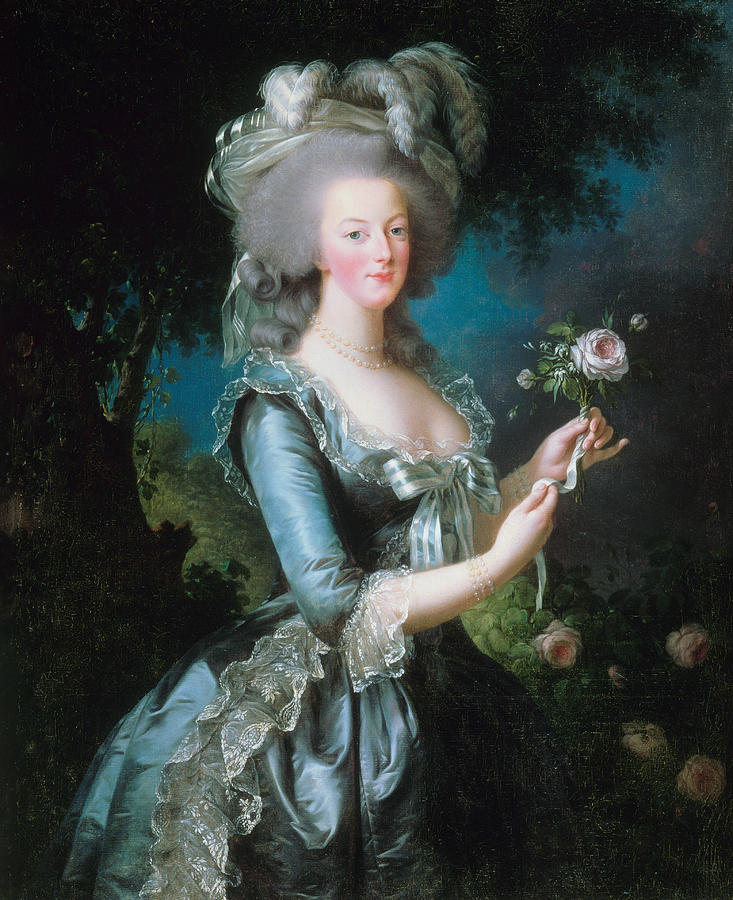
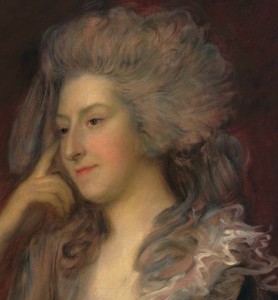
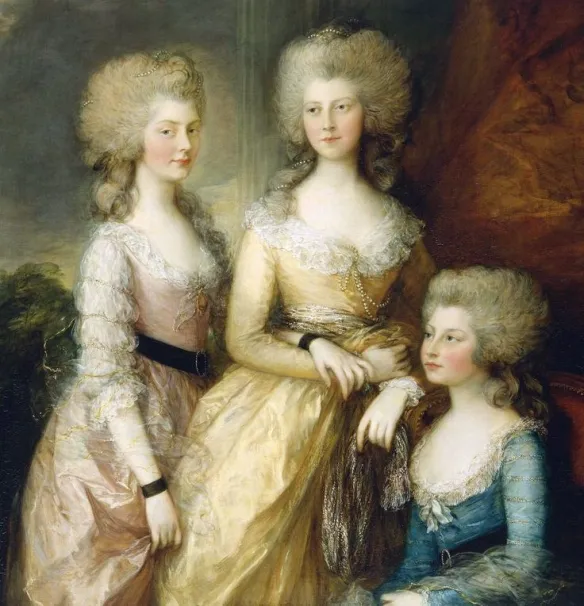
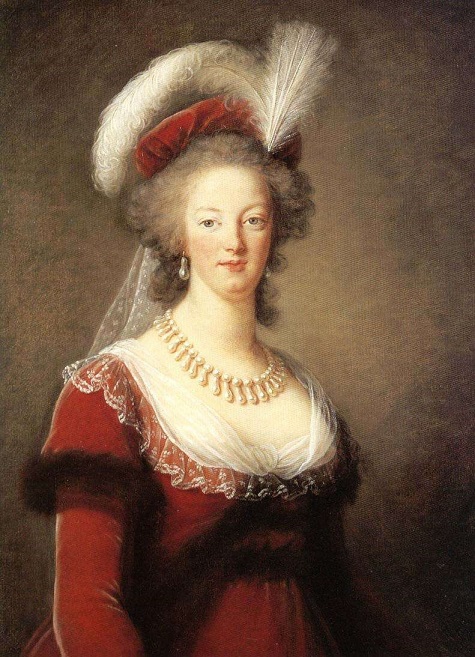
“Fashions of that day made dancing a form of torture…hair dressed at least a foot high, sprinkled with a pound of powder and pommade which the slightest movement shook down on the shoulders, and crowned by a bonnet known as a ‘pouf’ on which feathers, flowers and diamonds were piled pell-mell – an erection which quite spoiled the pleasure of dancing. A supper party, on the other hand, where people only talked or made music, did not disturb this edifice.”
From the memoirs Madame de la Tour du Pin
Just as quickly as the pouffe style gained popularity, it was suddenly obsolete. The muse for the invention of the style, Marie Antoinette, lost a substantial amount of hair during the birth of her son. Autié had to think fast to help preserve what hair the queen had left, so he pulled out his scissors and gave her locks a snip. I dare say that the result was what some today might describe as a curly mullet. He called the resulting short style coiffure à l’enfant (also called the Hedgehog) – and within two weeks, this naturalistic cut was the rage. The dizzying heights of the pouffe were gone.
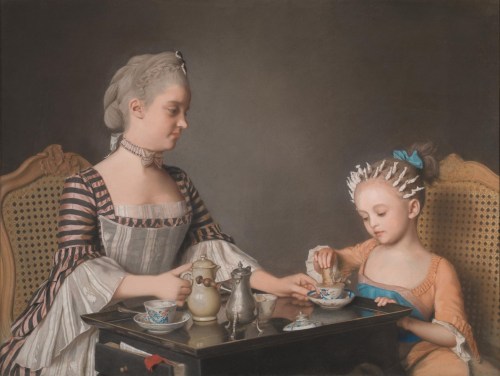
“Likewise I cannot help but touch upon a point that many of the papers repeat to me too often: it is the hairstyle that you wear. They say that from the roots it measures 36 pouces high and with all the feathers and ribbons that hold all of that up! … A pretty young queen full of charms has no need of all these follies. Quite the contrary. A simple hairstyle suits her better and is more appropriate for a queen. She must set the tone, and everyone will hurry to follow even your smallest errors…”
Queen Maria Theresa of Austria-Hungary – to daughter Marie Antoinette
“…It is true that I am a bit occupied by my hairstyle, and as for the feathers, everyone wears them, and it would look extraordinarily out of place not to”
Marie Antoinette – her reply to her mother, Maria Theresa
1. Fashion, Costume, and Culture: Clothing, Headwear, Body Decorations, and Footwear Through the Ages. Sara Pendergast, Mr Tom Pendergast, Sarah Hermsen.
2. Scott, John, etal., The London Magazine, Vol. 14, 1826, p. 180.
3. The Unknown Ladies Cook Book.
4. Copies of Original Letters from the Army of General Bonaparte in Egypt. 1798. p. 111.
5. Marie Antoinette’s Head: The Royal Hairdressing, the Queen, and the Revolution. Will Bashor.
6. Recollection of Leonard. Léonard Alexis Autie, 1909. p. 157.
7. Frampton, Mary. The Journal of Mary Frampton: From the Year 1779, Until the Year 1846. S. Low, Marston, Searle, & Rivington, 1885.
9. Queen of Fashion: What Marie Antoinette wore to the Revolution. Caroline Weber. 2007. p.104.
2brute
Another good article, Niobe.
Niobe
Thank you!
brianstamm
My wife found this to be very interesting as did I. Keep them coming Niobe.